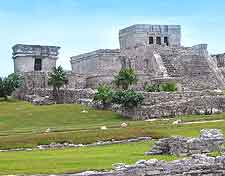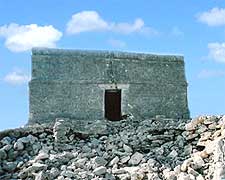Cozumel History Facts and Timeline
(Cozumel, Quintana Roo, Mexico)

Best-known for its snorkelling and scuba diving, Cozumel has a rich and fascinating history, due in part to the ancient Mayan civilisation that once inhabited the island.
Some artefacts dating back to the pre-classic Olmec civilisation, the oldest known civilisation in Mexico, have been found on the island. Although many of the Mayan ruins have disappeared, several large sites remain and will appeal to those fascinated by the Mayan history on Cozumel.
The Mayans
During the post-classic period, women flocked to the island's temples in order to promote fertility. The biggest ruins were demolished during WWII in order to make room for a runway, but the large San Gervasio ruins are still open to visitors. They can be found inland and are located several miles north of the main highway, Carreterra Transversal. Those visitors staying in the south of Cozumel have easy access to the El Caracol temple, which is known to have been used as a Mayan lighthouse.
Spanish Visitors
In 1519, roughly 40,000 Mayans were believed to have resided on the island. Unfortunately they were rapidly decimated by smallpox, introduced by Spanish invaders led by explorer Hernán Cortéz. These unwelcome visitors also destroyed many of the temples. Around 50 years later, only 30 Mayans remained alive.
The island was deserted during many of the following years, apart from a spell as a refugee camp in 1848, during the Caste War of Yucatán. Abraham Lincoln visited the island at this time and considered buying it. The continuing conflict dissuaded him from doing so, but there is still a reminder of his visit in the form of a plaque in the Cozumel Museum.

Cozumel in the 20th Century
By the 1960s, the previous bloodshed and conflict that had played a significant part in Cozumel history was long forgotten. The island had an airport from WWII capable of handling international aircraft, while Jacques Cousteau, the famous diver, began to promote the stunning Palancar Reef, located off the south coast of the island.
In the late 1970s, local authorities built a much bigger airport, which was later expanded in 2003. It handles more than 400,000 passengers each year, with most visitors coming to enjoy the wonderful scuba-diving opportunities offered by Cozumel.
Preservation of the coral reefs is of the utmost importance. In 1996, the Cozumel Reefs National Marine Park was established by the Mexican government, which introduced strict rules regarding the treatment of the reefs. However, the government could not stop the force of nature in 2005, when two of the strongest hurricanes in the history of Cozumel caused damage to the shallower habitats.
 Best-known for its snorkelling and scuba diving, Cozumel has a rich and fascinating history, due in part to the ancient Mayan civilisation that once inhabited the island.
Best-known for its snorkelling and scuba diving, Cozumel has a rich and fascinating history, due in part to the ancient Mayan civilisation that once inhabited the island.